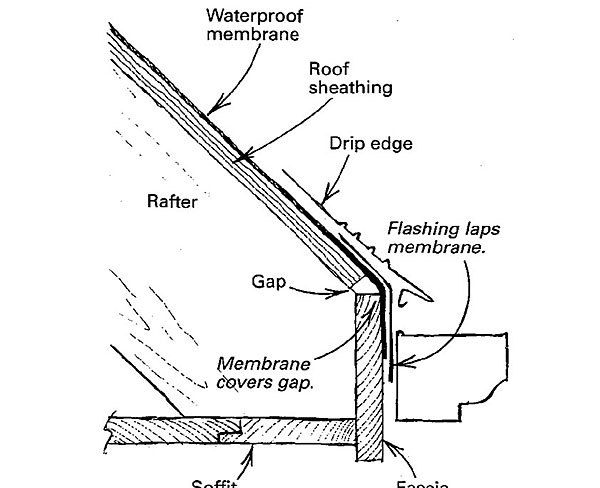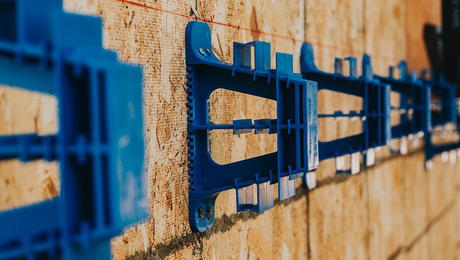
The winter of 1993-94 was tough on buildings in the Northeast. Many houses and commercial buildings around here experienced damage from ice dams for the first time. In the course of repairing a number of houses, I repeatedly found that the roofing installers had not sealed a common route that ice follows into a roof: the gap between the fascia and the roof sheathing.
What I found in roof after roof that had gutters was that ice and water would go under the drip edge and get into the roof through that gap. These roofs also had 3-ft. wide self-adhering waterproof membranes along the eaves, membranes that are supposed to shield the structure from ice and water damage.
The drawing shows how I’ve modified the typical roof-edge detail to correct the problem that resulted from the gap. I run the waterproof membrane a couple of inches down the fascia to a point below the level of the gutters. Because waterproof membranes aren’t rated for exposure to sunlight, I cover the membrane with a piece of flashing that runs from the edge of the roof sheathing to the middle of the fascia. With this detail, ice buildups forming up from the gutter might get under the drip edge, but they can’t get through the gap.
Chuck Green, Ashland, MA



























